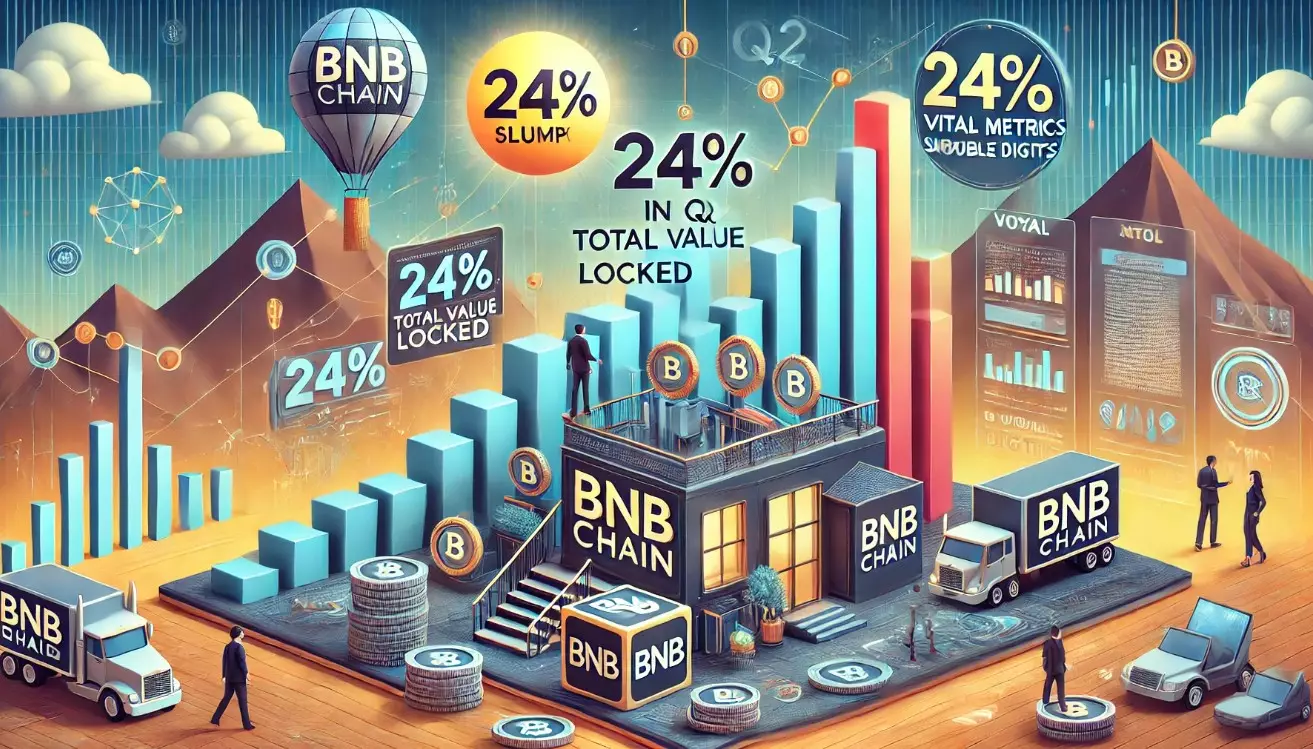In the second quarter of the year, the BNB Smart Chain (BSC) faced a mix of challenges and opportunities. Despite the native token BNB remaining relatively flat, down 5% quarter-over-quarter, the network’s key metrics showed a variety of trends. According to a recent report by Messari, the chain’s revenue experienced a significant decline of 28% QoQ to $48.1 million. This drop was largely attributed to the decrease in BNB’s price, leading to a 51% sequential decline in revenue when measured in BNB terms. Additionally, network activity saw a decrease, with average daily transactions dropping by 10% QoQ to 3.7 million and average daily active addresses falling by 18% QoQ to 1.1 million.
User Preferences and Staking Activity
Amidst the overall decline in network metrics, there were notable shifts in user preferences within the BSC ecosystem. Decentralized exchange Uniswap experienced a significant increase in daily transactions, up 630% QoQ, while PancakeSwap, the previously dominant player, saw a 46% QoQ decrease. Moreover, the total BNB staked on the network increased by 30% QoQ to 30.4 million BNB, with the total staked value reaching $17.7 billion. Despite this growth, the BSC still ranks behind the Solana blockchain in terms of staked value, trailing by a significant margin.
DeFi Ecosystem and Trading Volume
The decentralized finance (DeFi) ecosystem on the BSC saw a decrease in total value locked (TVL) during Q2, down by 24% to $5.5 billion. This drop was primarily driven by a 41% QoQ decrease in borrowing on the DeFi protocol, Venus Finance. The decrease in TVL was partially attributed to the decline in the value of the BNB token, which experienced fluctuations throughout the quarter. However, despite these challenges, the Binance Smart Chain maintained the third-highest decentralized exchange (DEX) trading volume during the second quarter, with a total volume of $66 billion. This placed it behind only Ethereum (ETH) and Solana in terms of trading activity.
The BNB Smart Chain’s performance in the second quarter of the year was marked by a mix of positive and negative trends. While revenue and network activity experienced declines, there were notable shifts in user preferences and staking activity within the ecosystem. The DeFi sector saw a decrease in TVL, but the network maintained a strong position in terms of trading volume. Moving forward, it will be interesting to see how the BSC evolves and adapts to the changing dynamics of the cryptocurrency market.



















Leave a Reply